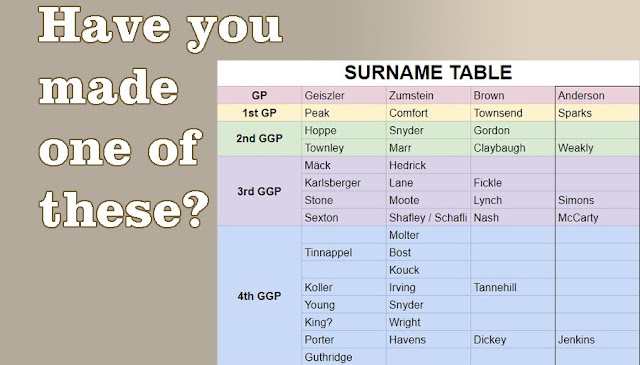5 Cool Sites For Spicing Up Your Family History
Stop writing a boring family history. Stop. Stop it right now! There is no need to have a dry, dull family history when these five website can help you imagine the time and place where your ancestor lived. These resources are primarily for the United States ancestor, but if you have some fantastic international resources, share those in the comments below.
History Timelines
datesandevents.org/
When you don't know much about history, then you can turn to History Timelines to find clues for topics that might have happened when your ancestor lived. They may or may not have been involved with the incidents, but these events often were in the paper and discussed in social settings. The great thing about this site is that the United State timelines can be broken down by state. Plus, you can learn a few additional facts about each state that you might not have known.
 |
| Iowa Timeline begins in 1682. |
David Rumsey Historical Map Collection
Davidrumsey.com
Maps are always changing. In my short life, I have had maps that listed places like East Germany, Yugoslavia, and the USSR. Eritrea and South Sudan are very recent countries. But even states and territories change. Nunavut was separated from the Northwest Territories in Canada in 1999. In the US since 2010, one new county was created in Alaska and an independent city was absorbed into a county in Virginia.
Looking at maps from our ancestors lives can help us understand what they saw. Contemporary maps give us clues as to the development in the area. We can use their writings to trace journeys and migrations. Maps help to provide some of the color we need to our ancestors stories. The David Rumsey Map collection is probably the largest collection of maps in the world. Comprising some 150,000 images, more than 70,000 of them have already been digitized and made available online with plans to complete the digitization of the entire collection.
 |
| How cool is this railway and steamship map? These and other maps are available. |
These images are not just a basic image, but high resolution that can be downloaded or viewed online with their zoom function. Maps are available from around the world all the way back to the 17th century.
Food Timeline
We all have to eat. And our ancestors had to eat too. As we go back in time and further removed by distance, the culinary palate can change greatly. Let me give you an example that many of you can relate to.
The food timeline is a great place to start when you have food references. There is a historical look at food and when things were developed. For instance, about a year ago I was having dinner with some friends and during the conversation it was casually mentioned that tomatoes were indigenous to the Americas. I had known this before but until I was eating with this couple (one of Italian descent and the other of Mexican descent) it didn’t dawn on me that staple of Italian cooking, the tomato, didn’t exist in their cuisine until a few hundred years ago. Christopher Columbus didn’t eat lasagna growing up. Marco Polo never had spaghetti and meatballs.
The food timeline has links to contemporary cookbooks and recipes. Maybe you’ll be lucky and find a reference to something your ancestors made. It also has some general articles on food of certain time periods like Medieval Food or Frontier America. These can give you an idea of what meals might have been like. If there is an obscure food reference, the food timeline is a great place to start to learn about it.
National Climatic Data Centerncdc.noaa.gov
One of the great things that governments do is gather information. I have to say that while most government websites are not very good at making that information easily searchable or understandable, the sheer amount of information available is staggering. The government has been tracking basic weather data since around 1870. There has been pretty good coverage across most populated areas around the United States. This includes temperature, wind data and precipitation. The government website also has some datasets from other records in certain locations that go back into the 1700s.
 I use this to check what the weather is for the dates I have when I know a specific location for that date. For instance, my great grandfather arrived in New York on 20 March 1912. Going to the NOAA website you search for the date and the specific location. It will tell you the dates that data is available. After filling everything out, they will email you the data report.
I use this to check what the weather is for the dates I have when I know a specific location for that date. For instance, my great grandfather arrived in New York on 20 March 1912. Going to the NOAA website you search for the date and the specific location. It will tell you the dates that data is available. After filling everything out, they will email you the data report.
Historical Statistics
While it is called historicalstatistics, I use this website for one purpose. Money conversions. This money conversion engine is excellent for comparing different currencies from different time periods. Normally, I try to convert values into today’s dollars so that I can get a sense of what the magnitude of the value was.
The website was created by a Swedish scholar so a lot of things are in relation to Swedish economics. But it gives a close enough approximation for most purposes.
Make use of the money, history, maps, food, and weather in your family histories. Maybe then your family might read them more often.






Comments
Post a Comment